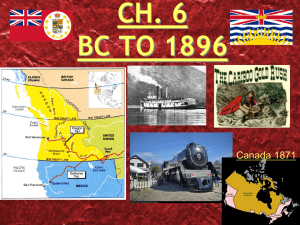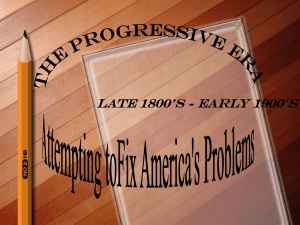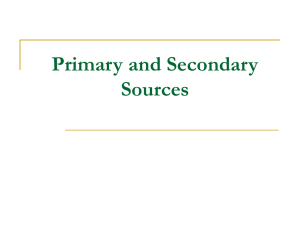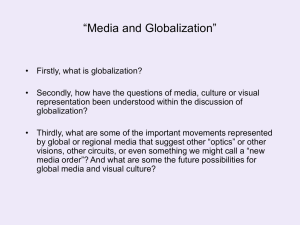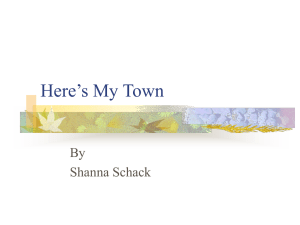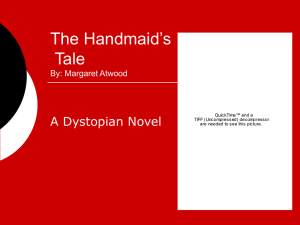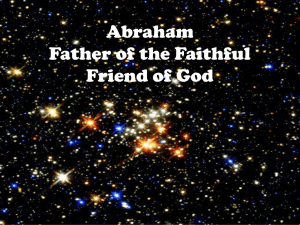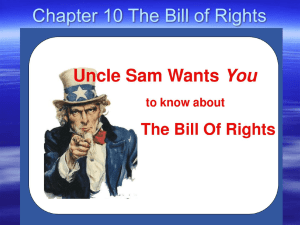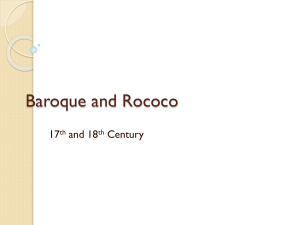File ch. 8 history
advertisement
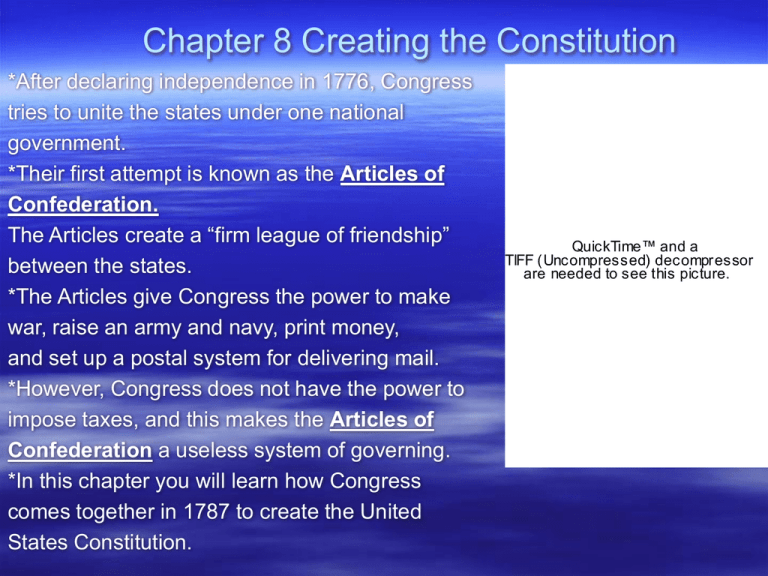
Chapter 8 Creating the Constitution *After declaring independence in 1776, Congress tries to unite the states under one national government. *Their first attempt is known as the Articles of Confederation. The Articles create a “firm league of friendship” between the states. *The Articles give Congress the power to make war, raise an army and navy, print money, and set up a postal system for delivering mail. *However, Congress does not have the power to impose taxes, and this makes the Articles of Confederation a useless system of governing. *In this chapter you will learn how Congress comes together in 1787 to create the United States Constitution. QuickTime™ and a TIFF (Uncompressed) decompressor are needed to see this picture. Test Prep The Articles of Confederation did all of the following except A) serve as the first plan of government for the United States. B) form a loose union of the states. C) divide power among three branches of government. D) give Congress power to make war and peace. Answer: C) divide power among three branches of government. 8.2 Early Quarrels and Accomplishments *Even before the Revolutionary War ends, States are quarrelling over taxes on goods that crossed state borders and over boundary lines. *Under the Articles of Confederation, Congress has no power to do anything QuickTime™ and a TIFF (Uncompressed) decompressor about that. are needed to see this picture. Developing Western Lands *To end confusion and disputes over settling and developing western lands, Congress does pass the Land Ordinance of 1785. Under this law, lands are divided into townships of six-mile squares. Each township is then divided into 36 sections of 640 acres each. *By 1787 Congress is ready to sell sections of the Ohio Valley known as the Northwest Territory to settlers. But are they to be colonies or new states? Ch. 8.2 Continued… The Northwest Ordinance *Congress answers this question with the Northwest Ordinance of 1787. *This law divides the Northwest Territory into smaller territories, each governed by a territorial governor. *As soon as a territory has 5,000 free adult males, it can elect its own legislature. *When the population reaches 60,000, it can apply for statehood. *The Ordinance gives settlers the same rights as other citizens, except the right to practice slavery. QuickTime™ and a TIFF (Uncompressed) decompressor are needed to see this picture. 8.3 Shay’s Rebellion and the Need for Change *Under the Articles, the new nation has serious money problems. *Paper money printed by Congress during the war is useless. *Not enough gold or silver to mint coins. *States begin printing their own paper money. *No one knows what the currencies are worth. Massachusetts Farmers Rebel *Farmers cannot pay their debts and taxes. *Judges in Massachusetts order farmers to sell land and livestock to pay off their debts. Massachusetts Currency QuickTime™ and a TIFF (Uncompressed) decompressor are needed to see this picture. QuickTime™ and a TIFF (Uncompressed) decompressor are needed to see this picture. Daniel Shays closes down courthouses Ch. 8.3 Continued… *Daniel Shays leads a rebellion of Massachusetts farmers. *Shays and his followers close down courthouses to keep judges from taking their farms. *Then they march on the national arsenal at Springfield and seize weapons stored there. *Massachusetts sends militia to Springfield to restore order. *Many Americans see this as proof that the nation is falling apart. QuickTime™ and a TIFF (Uncompressed) decompressor are needed to see this picture. QuickT i me™ and a T IFF (Uncompressed) decompressor are needed to see this pi cture. QuickTime™ and a TIFF (Uncompressed) decompressor are needed to see this picture. Ch. 8.3 Continued… A Call for a Convention *Congress is shocked into calling for a convention to consider “the situation of the United States.” *May 1787 each states sends delegates to Philadelphia. More than fifty delegates from 12 states gather at the Philadelphia State House to begin writing the Constitution of the United States. Rhode Island did not send representatives because It was afraid of losing its States’ rights. QuickTime™ and a TIFF (Uncompressed) decompressor are needed to see this picture. Test Prep Shay’s Rebellion is remembered today because it A) threatened law and order in Massachusetts. B) dramatized the money problems faced by poor farmers. C) shocked Congress into calling for a Constitutional Convention. D) showed how well the Articles of Confederation worked. Answer: C) shocked Congress into calling for a Constitutional Convention. Ch. 8.4 Opening the Constitutional Convention *May 25, 1787 Constitutional Convention meets for the first time. *Delegate’s first action is to elect George Washington president of the convention. The Delegates *Fifty-five delegates from 12 states attend the convention. *Rhode Island boycotts the meeting because it fears a strong national government will endanger the rights of states. *Others who agree with Rhode Island include Sam Adams, John Hancock, and Patrick Henry, so they do not attend either. *As a group, the delegates are mostly young, well educated and well-to-do. *More than 2/3 are lawyers. *More than 1/3 own slaves. Sam Adams QuickTime™ and a TIFF (Uncompressed) decompressor are needed to see this picture. QuickTime™ and a TIFF (Uncompressed) decompressor are needed to see this picture. John Hancock QuickTime™ and a TIFF (Uncompressed) decompressor are needed to see this picture. Patrick Henry 8.4 Continued… The Father of the Constitution *James Madison addresses the convention more than 200 times. *His influence is so great that he will later be called the “Father of the Constitution.” *His notes tell us what went on inside the convention day by day. The Rule of Secrecy *After choosing a president, the delegates vote on rules for the convention. *Most important is the rule of secrecy. *They agree to keep secret whatever is said until the convention is over. QuickTime™ and a TIFF (Uncompressed) decompressor are needed to see this picture. James Madison, the “Father of the Constitution,” goes on to become the 4th president of the United States. 8.4 Continued… Shared Beliefs and Clashing Views Enlightenment: the “Age of Reason” in 17th and 18th *The delegates have much in common, but Century Europe. Enlightenment they also have different views on many thinkers emphasized using issues facing the new nation. rational thought to discover the *They share the belief in the rights to “life, truths about nature and society. liberty, and the pursuit of happiness.” Republic: a country governed *These beliefs reflect the ideas of the by elected representatives. Enlightenment. *The delegates believe the best way to Constitution: a written plan protect these rights is through some form that provides the basic of republic. framework of a government. *Since the colonies were started, Americans have participated in their own governments. After the revolution, all states adopt their own constitutions that embrace republican beliefs. 8.4 Continued… *Many questions need to be resolved: -Who should have a say in a representative government? -How powerful should the national government be? -Will a strong national government threaten individual liberty? -If the national government is too weak, will it be able to protect its citizens? QuickTime™ and a TIFF (Uncompressed) decompressor are needed to see this picture. Test Prep James Madison is known as the “Father of the Constitution” because A) he was the oldest and wisest of the delegates to the convention. B) he took notes on everything said during the convention. C) he studied modern and ancient governments to see what worked. D) his influence on the Constitutional Convention was so great. Answer: D) his influence on the Constitutional Convention was so great. Ch. 8.5 Issue: How Should States Be Represented in the New Government? *Virginia delegation presents the convention a new plan of government to replace the Articles. *Delegates divided on one key issue: Should the government’s power come from the states or from the people? Virginia Plan *Calls for strong national government with three branches: -Legislative branch (Congress) will make laws. -Executive branch will enforce laws. -Judicial branch (courts) will interpret the laws. *Under the Virginia Plan, Congress will be made up of two houses, the House of Representatives and the Senate. *Each state will send representatives to Congress based on its population. *States with larger populations like this plan. QuickTime™ and a TIFF (Uncompressed) decompressor are needed to see this picture. 8.5 Continued… The New Jersey Plan *Delegates from small states do not like the Virginia Plan. *New Jersey comes up with their own plan. *New Jersey plan will have three branches, but the legislative branch will have just one house, not two. *That way each state will have an equal vote in Congress. QuickTime™ and a TIFF (Uncompressed) decompressor are needed to see this picture. Test Prep An important challenge facing the Constitutional Convention was how to balance the A) needs of eastern and western states. B) interests of large and small states. C) rights of slaves and slaveholders. D) demands of farmers and workers. Answers: B) interests of large and small states. Test Prep Both the Virginia and New Jersey Plans called for A) three branches of government. B) two houses of Congress. C) an elected president. D) an end to the slave trade. Answer: A) three branches of government. Ch. 8.6 Resolution: The Great Compromise Tempers Rise *The debate over who Congress should represent continues into July. *States with large populations favor Virginia Plan. *States with small populations favor New Jersey Plan. *Small states fear large states will try to crush them. *Large states fear small states may find some foreign ally who will defend them. *Convention reaches a crisis point. A Compromise is Reached *Roger Sherman of Connecticut puts forth a compromise. *Congress will have two houses. *In the House of Representatives, the number of representatives from each state will be based on the state’s population. *In the Senate, each state will have two Senators to be elected by their state legislatures. This plan comes to be known as the Great Compromise. QuickTime™ and a TIFF (Uncompressed) decompressor are needed to see this picture. QuickTime™ and a TIFF (Uncompressed) decompressor are needed to see this picture. Test Prep The Great Compromise was primarily related to A) representation in Congress. B) election of the president. C) selection of Supreme Court justices. D) checks and balances. Answer: A) representation in Congress. Ch. 8.7 Issue: How Should Slaves Be Counted? *Next issue the convention faces is how to count slaves as part of a state’s population. People or Property? *At the time of the convention, nine tenths of slaves live in the South. *Southerners want slaves counted as people so they can have more representatives in the House. *Unless slaves are to be given the same rights as whites, northern delegates want them counted as property. QuickTime™ and a TIFF (Uncompressed) decompressor are needed to see this picture. Slave Population As Percentage Of State Population 8.7 Continued… New Thinking on Slavery *The Declaration of Independence forced many whites to reexamine their views on slavery. *Some now see it as a great evil. *Benjamin Franklin becomes president of an anti-slavery society. *Yet most southerners are uneasy about giving up the institution of slavery because their economy depends on it. *The question facing the framers is how far they can take this new thinking in a nation that is becoming half-slave and half-free. QuickTime™ and a TIFF (Uncompressed) decompressor are needed to see this picture. Slave Poster QuickTime™ and a TIFF (Uncompressed) decompressor are needed to see this picture. Benjamin Franklin, 1787 Ch. 8.8 Resolution: The Three-Fifths Compromise *After bitter debate, James Madison proposes a compromise: count each slave as three fifths of a person. *This becomes known as the three-fifths compromise. QuickTime™ and a TIFF (Uncompressed) decompressor are needed to see this picture. 8.8 Continued… The Slave Trade *Northern delegates favor giving Congress broad power to control trade of products between the states and other countries. QuickTime™ and a TIFF (Uncompressed) decompressor are needed to see this picture. *Southern delegates fear Congress may try to tax southern exports such as rice and tobacco, and may eventually outlaw the trading of slaves. *Compromise is reached. Congress will have the power to control trade, but with two limitations: 1) Congress cannot place any tax on exports going to other countries. 2) Congress cannot interfere with the slave trade for 20 years, or until 1808. *Delegates also agree to a provision known as the Fugitive Slave clause: Escaped slaves have to be returned to their owners, even if they are caught in free state. Ch. 8.9 Issue: How Should the Chief Executive Be Elected? *Next issue is who will head the new government’s executive branch? QuickTime™ and a One Executive or Three? TIFF (Uncompressed) decompressor are needed to see this picture. *Some argue that three people can lead the country better than one. *Some fear that a single leader may be too ambitious or too eager for war. *In spite of these concerns, the framers Article II: The Executive Branch agree to a single executive, to be called the president. Choosing the Chief Executive *Some delegates want Congress to appoint the president. *Some delegates want the people to choose the president. *Some delegates want the president to be elected by a special group of “electors” from each state. Ch. 8.10 Resolution: The Electoral College *After many unsuccessful votes, the framers reach another compromise: a special body called the Electoral College will elect the government’s leaders. QuickTime™ and a TIFF (Uncompressed) decompressor are needed to see this picture. The Electoral College System *Made up of electors who cast votes to elect the president and vice president every four years. *Each state has as many electors as senators and representatives in Congress. *Electors are chosen by state legislatures until the 1820’s. Today, people choose their state’s electors when they vote in presidential elections. *Originally, the top two candidates become president and vice president. 8.10 Continued… Political Parties and Elections *Within a few years of the convention, political parties are nominating candidates for president . *Electoral College system still affects presidential elections today. In most states the candidate who gets the most votes gets all of the electoral votes. *As a result, a candidate can win a majority in the Electoral College without winning the popular vote of the people. QuickTime™ and a TIFF (Uncompressed) decompressor are needed to see this picture. QuickTime™ and a TIFF (Uncompressed) decompressor are needed to see this picture. QuickTime™ and a TIFF (Uncompressed) decompressor are needed to see this picture. Election of 2000 between Democrat Al Gore and Republican George W Bush. Gore won the popular vote, but Bush won the Electoral College vote and became president. Test Prep The Constitutional Convention gave the job of choosing a chief executive to A) major political parties. B) electors chosen by the states. C) state legislatures and governors. D) members of Congress. Answer: B) electors chosen by the states. Ch. 8.11 The Convention Ends Approving the Constitution *Framers decide that 9 states must ratify the Constitution before it can go into effect. *Framers decide that each state will ratify the Constitution at special state conventions. Signing the Constitution *September 17, 1787 delegates declare the Constitution complete. *38 of the original 55 delegates sign the Constitution. *A new era is about to begin for the United States. QuickTime™ and a TIFF (Uncompressed) decompressor are needed to see this picture. QuickTime™ and a TIFF (Uncompressed) decompressor are needed to see this picture. Ch. 8.12 The Constitution Goes to the Nation *Newspapers in every state print the Constitution as soon as they can get it. *Entire country debates how strong the national government should be. The Federalists *Supporters of the Constitution. *Want strong national government. *James Madison, Alexander Hamilton, John Jay. *Three-branch system will ensure powers are equally divided. QuickTime™ and a TIFF (Uncompressed) decompressor are needed to see this picture. QuickTime™ and a TIFF (Uncompressed) decompressor are needed to see this picture. QuickTime™ and a TIFF (Uncompressed) decompressor are needed to see this picture. QuickT i me™ and a T IFF (Uncompressed) decompressor are needed to see this picture. 8.12 Continued… The Anti-Federalists *Oppose the Constitution. *Congress will ruin the country with taxes. *President will rule like a king. *Constitution does not list the rights of the people. *Fear giving up state’s powers to form a stronger Union. QuickTime™ and a TIFF (Uncompressed) decompressor are needed to see this picture. Test Prep Supporters of the new Constitution were known as A) Republicans. B) Patriots. C) Anti-Federalists. D) Federalists. Answer: D) Federalists. Ch. 8.13 Summary *Both the Articles of Confederation and the Constitution that it replaced were attempts to realize the ideals of the American Revolution and the Declaration of Independence. *The Articles of Confederation created a loose union of states under a weak central government. *The challenge was to create a government that was strong enough to guarantee the right to life, liberty and the pursuit of happiness, but not strong enough to take those rights away. *For four months 55 delegates argue over a number of issues. *In the end the framework created included a series of compromises including: 1) How states were to be represented in the new legislative branch. 2) How slaves were to be counted in determining a state’s population. 3) Creating a single chief executive to be chosen by the Electoral College. *Federalists supported the Constitution. *Anti-Federalists opposed the Constitution. *Now it was up to the people to decide. Look carefully at the sun painted on the back of George Washington’s chair at the Convention. Benjamin Franklin wondered whether the sun was a rising sun or a setting sun. At the end of the Convention he concluded that it was a rising sun. What do you think Franklin meant by that? QuickTime™ and a TIFF (Uncompressed) decompressor are needed to see this picture.
